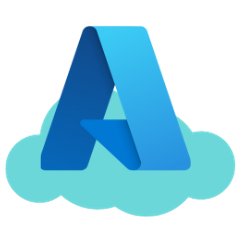Top 20+ Microservices Interview Questions and Answers - [updated 2024]
Since its commencement in 2011, microservices are by now highly prevalent among organizations developing cutting-edge applications. Nowadays organizations are gradually more adopting this service for creating enterprise solutions. If you are enthusiastic to make a career in this field and willing to get ready for an interview then here are some microservices interview questions useful to you:
In this Microservices interview questions blog, we have collected the most frequently asked questions by interviewers. These Microservices questions are collected after consulting with .Net Microservices Certification Training experts.
20+ Microservices Interview Questions and Answers
1. What are the main differences between Microservices and Monolithic Architecture?
A: Monolithic architecture is generally tightly coupled whereas Microservices architecture is loosely coupled. Microservices focus on products rather than projects; the reverse is true for Monolithic. The service startup is faster in microservice than monolithic architecture. In a microservice architecture, any changes implemented in a single data model does not influence other microservices. But in monolithic architecture, any modifications in the data model influence the whole database.
2. Name the key components of Microservices:
A: The major components of a Microservice architecture are clients, messaging formats, identity providers, API gateway, management, databases, service discovery, and static content.
3. Explain the challenges found in Microservice deployment?
A: The deployment of Microservice needs huge investment and a huge infrastructure setup. The management for application, configuration, and staff selection becomes difficult. Moreover, the communication is complex and there are several security threats. At times, it becomes difficult to test and debug the services. An organization needs extreme planning for managing operations overhead.
4. What are the cases when you need to consider microservice architecture?
A: Following are the cases where you need to implement microservice architecture:
- You already use a monolith application and later it advances to a level where there are issues in scaling.
- You cannot reutilize the modules or components or services over various platforms of projects.
- Execution of new features is difficult and prone to errors.
5. Name three commonly used tools for Microservices
A: Wiremock Docker and Hysrix.
6. Define coupling and how are the microservices coupled?
A: Coupling is the extent of interdependence between software modules. In simple terms, it represents proximity connected to two modules or routines. The microservices are loosely coupled with one another.
7. Which are the popular companies implementing Microservice architecture?
A: The majority of the large-scale websites such as Netflix, Uber, Amazon, eBay, Twitter, and Spotify have adopted microservices architecture.
8. Describe the 3 types of tests for Microservices?
A: The 3 types of tests are as below:
General tests such as performance and unit tests are performed at the bottom level test. Such tests are fully automated.
At the middle level, investigative tests like the usability tests and stress tests are performed.
You can perform acceptance tests at the top level. Mostly, they are fewer in numbers. The same assists stakeholders to get an idea on varied software features.
9. Why Microservices use containers?
A: Containers are the simplest and efficient method to handle all the microservice-based application. Moreover, it assists you to develop and implement separately. Microservice can utilize the containers without extra effort.
10. What is API Gateway?
A: API Gateway is an exceptional class of microservices that fulfills the requirement of a single client application. Also, it serves the backend resources i.e. microservices with a single entry point. Hence, there are no more concerns related to monitoring, security, and flexibility. API Gateway uses a client-side load balancer library to spread load all over the instances depending on round-robin fashion.
11. What is RESTful?
A: RESTful also known as REST (Representational State Transfer) web service is basically an architectural style that assists the computer systems to seamlessly communicate across the Internet. Such web services let it easier to understand and deploy microservices.
12. What is end-to-end testing Of Microservices?
A: End to End testing authenticates every process within the workflow to make sure everything works flawlessly. Also, it makes sure the system functions in an incorporated manner, and therefore, meeting the business needs. The corresponding tests can encompass the gaps during integration testing or unit testing. Also, it makes sure that the network parameters are properly configured and facilitates the advancement of microservices.
13. What Is Spring Boot?
A: When you start a new project, it is compulsory to add the latest build path or Maven dependencies. So, you have to do all the processes from the beginning. The Spring Boot is the solution helping you to prevent the code configurations.
14. What is Spring Cloud?
A: Spring Cloud is a short-lived microservices framework useful to rapidly build applications capable to accomplish fixed amounts of data processing.
15. What are the problems that Spring Cloud solves?
A: Spring cloud can deal with the below problems:
- Redundancy issues occurring in distributed systems
- Network issues, bandwidth issues, latency overhead, and security issues
- Stabilizing the allotment of load amongst resources like CPU, network links, clusters, etc
- Service discovery issues to guarantee flawless communication amid services in a cluster
- Performance issues arising due to operational overheads
16. What is an Actuator?
A: The actuator is primarily used to render operational information regarding the various parameters of a running application. These parameters are metrics, health, dump, info, env, etc. For smooth interaction, it makes use of JMX beans or HTTP endpoints.
17. What is the need for reports and dashboards in Microservices?
A: Reports and dashboards are basically useful for monitoring and maintenance of microservices. Multiple tools are available to accomplish this purpose.
Reports and dashboards can detect which microservices are allotted with what resources. They can also find out the services that are influenced whenever modifications take place in a component. Moreover, they offer an easy point that can be retrieved whenever documentation is needed. You can use reports and dashboards to gain an understanding of maturity and conformity from the components. In an organization, they are useful to analyze scenarios and ease various kinds of executive tasks.
18. What are the pros and cons of Microservice Architecture?
A: Pros of Microservice Architecture:
- Flexibility to use different technologies
- Every microservices work on a single capability
- Guarantees security of each service
- Multiple services are simultaneously developed and deployed
- Supports frequent software releases
Cons of Microservice Architecture:
- Needs more effort from the user end for configuration and other tasks
- Difficult to troubleshoot
- Raises delay because of remote calls
- Difficult to keep up transaction safety
- Difficult to track data over different boundaries
19. What is Distributed Transaction?
A: Distributed Transaction is a situation where a single event leads to the transformation of two or more disconnected sources of data that could not be allocated atomically.
20. What is OAuth?
A: OAuth is the full form of Open-standard Authorization Protocol. It is a framework that depicts how distinct services and servers can safely enable authentic access to their assets. For the same, there is no need to share the interrelated, single login credential. It is possible to share resources saved on one website with another website; no need to use their credentials. OAuth also enables access to the resources from the resource owner. It does so by permitting the client applications on third-party providers like GitHub, Facebook, etc.
21. What is Continuous Integration (CI)?
A: Continuous Integration (CI) is the procedure of making the build and testing for code automatic whenever a team element modifies version control. As a result, it motivates the developers to share code as well as unit tests. The same is done after combining the changes in a shared version control repository and after each small task complete.
22. What is Eureka in respect to Microservices?
A: Eureka is alternatively famous as the Netflix Service Discovery Server. It makes use of Spring Cloud and is generally recognized as the widely used setup to launch service discovery. Since it is not so heavy on the process of application development, it has become famous among the developers.
23. Explain Consumer-Driven Contract:
A: CDCs (Consumer-driven contract) is a prototype to develop services and it is being used by external systems. When you work on microservices, there is a specific provider who builds it and there will be single or multiple consumers using microservice. Typically, providers will state the interfaces within an XML document. However, in CDCs, every consumer of service communicates the interface anticipated from the Provider.

![Top 20+ Microservices Interview Questions and Answers - [updated 2024]](https://dotnettrickscloud.blob.core.windows.net/article/120220908153305.webp)



